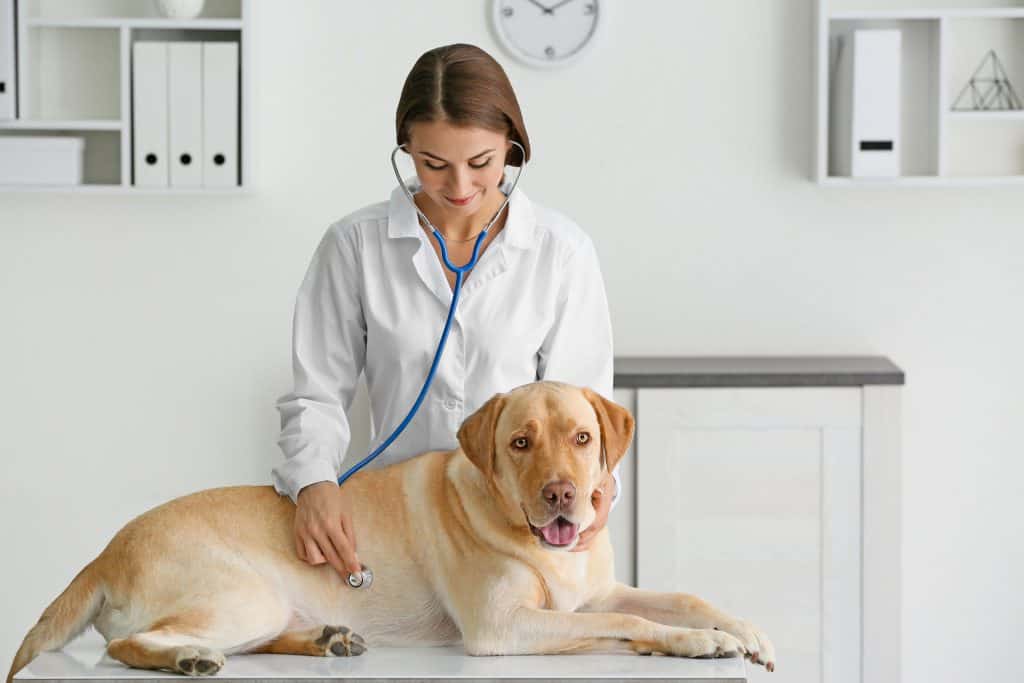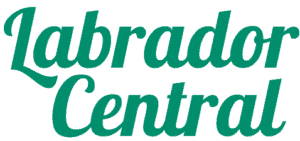As a Labrador owner, you want your beloved dog to live a long a happy life. For that reason, we made this guide with all the basic tips for raising a Happy and Healthy Lab. We hope you find these health and care tips useful for you and your retriever.

Diet and Nutrition
Needless to say, food is very important for Labradors, providing a well-balanced and nutritious diet is indispensable for raising a strong, happy, and healthy Labrador retriever. Besides giving your dog quality food it’s also very important to feed your Lab the right amount. Labradors are always hungry and if overfeed they can become obese very easily.
Choosing the right food
Make sure to carefully read the nutritional information label on the food bag before you choose what to feed your dog. Avoid foods that use generic ingredients like “meat” as this usually means that it is made from cheap and low-quality products. Instead choose brands that name the meat they use such as chicken, beef, or lamb. Another thing to consider is the amount of each ingredient in your dog’s food. Often ingredients are listed in the amount order.
Be aware of foods with high content of wheat and grains. These foods are very rich in calories. Instead, look for foods with high protein content. It’s important to always read the label. Marketing terms like “Premium” and “Natural” are ambiguous and don’t really mean anything.
How much should you feed your Labrador?
The amount of food you need to feed your labs will vary depending on different factors, like the type of food you are giving your dog, the amount of daily physical activity of your Lab, the age and size of your pet, among others.
Most food brands will have a chart on the package with the recommended amount of food for your dog. Of course, the best thing to do is to consult your veterinarian what is the right amount of food for your Lab.
A general rule applicable (using an 8oz measuring cup) for most commercial dog foods for an adult Labrador, is between 2 and 2 ½ cups a day, divided into two meals per day. For a puppy, under 6 months it’s recommended to feed between 1 and 1 ½ cups 4 times a day.
Exercise and activity
Labradors are a high-energy breed, they require between 1 and 1 ½ hours a day of exercise. Take your dog for daily walks, vigorous playing can also do the trick, if you have a large yard make your Lab play fetch until it tires out. Labradors love the outdoors, so take your dog for a hike once in a while, and if possible take your Lab for a swim. Labradors love water.
If your dog doesn’t get enough exercise, it will become bored and develop destructive behaviors like digging up your yard, scratching rugs and floors and chewing furniture, and every other thing they can find.
Grooming
Labradors have double-coated fur and shed a lot, constantly! And even more during molting season. If your Labrador lives indoors, you need to brush your dog every day. Labs don’t need to be bathed very often, in fact bathing your Lab too often will dry the dog’s skin. Bath your Lab only when necessary. That’s when it gets dirty or stinky. Labradors also require frequent nail trimming and teeth brushing.
Visiting the Vet
It’s advisable to take your Labrador to the vet twice a year for checkups and vaccinations. Labs also need to get their teeth and ears cleaned by a professional occasionally. Vet visits are a great opportunity to get this done.
Common Health Issues
Labrador retrievers are a very healthy breed overall. However, some Labs may be prone to develop hip and elbow dysplasia. Labs may also suffer from Heart disorders, eye conditions like progressive retinal atrophy, and hereditary myopathy. These conditions are hereditary and can be detected and treated by a veterinarian.
Labradors are also prone to develop bloat, also known as a twisted stomach. The medical term for this issue is Gastric dilation-volvulus (GDV).
Gastric dilation-volvulus (GDV)
GDV is a life-threatening condition that affects deep-chested dog breeds like Labradors. This is a condition in which the dog’s stomach gets filled with air and turns.
This causes difficulty in breathing, blocking off blood circulation, and rapture of the stomach. Bloat is very dangerous for your dog’s life and is deadly in 50% of cases.
The classic symptoms of GDV are: Enlarge abdomen, Retching, Salivation, Restlessness, and pain when pressing the dog’s belly. Sometimes the dog will try throwing up, but nothing comes out.
If you think your dog is suffering from Gastric dilation-volvulus (GDV), there is nothing you can do at home. Take your dog to the vet immediately for emergency treatment!
The causes of GDV are not really known, but there is a strong correlation between dogs that have eaten or drunk water in large amounts and then had vigorous exercise.

